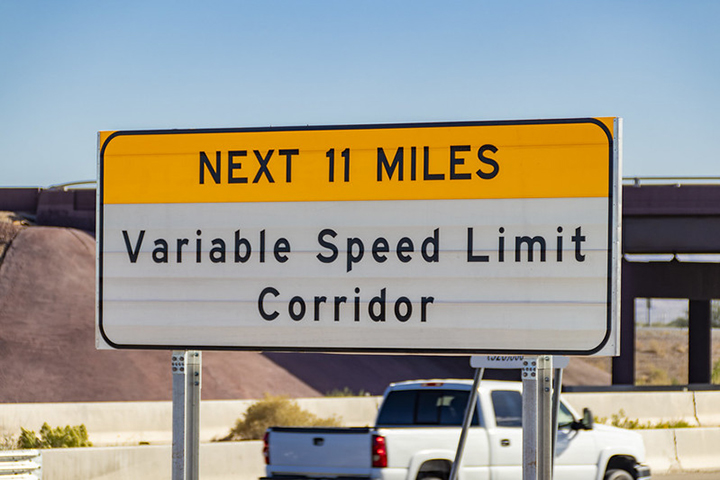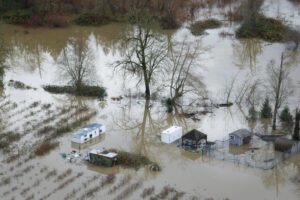PHOENIX — Visibility detectors. A weather radar system. Variable speed limit signs. Closed-circuit cameras. Overhead message boards.
These technologies, clustered along 10 miles of Interstate 10 between Phoenix and Tucson, are now operating as an innovative dust-detection and warning system that’s ready to quickly tell drivers to slow down for safety when windblown dust reduces visibility.
This first-of-its-kind dust system, developed by the Arizona Department of Transportation (ADOT), is deployed between Eloy and Picacho Peak, an area prone to sudden blowing dust. After completing a 30-day test period, the array was operational in time for the official June 15 start of monsoon season, the peak time for severe storms that create hazardous driving conditions in the area.
While local drivers should be familiar with dust storms and warnings to “pull aside, stay alive,” those passing through the detection and warning zone between mileposts 209 and 219 should be ready for the new possibility of reduced speed limits and other warnings.
Drivers will first notice signs saying “Caution: Variable Speed Limit Corridor.” Soon after, a series of programmable speed limit signs every 1,000 feet can change the legal speed limit from 75 mph to as low as 35 mph. Additional variable speed limit signs are positioned every 2 miles.
Overhead electronic message boards in and near the corridor will alert drivers to blowing dust and warn them to slow down. Speed-feedback signs will inform drivers of their actual speeds.
Those highly visible elements of the dust detection system are supported by mostly invisible technologies that work automatically.
Thirteen visibility sensors mounted on posts along the freeway use light beams to determine the density of dust particles in the air. Once visibility drops to certain levels, the system activates overhead message boards and the variable speed limit signs.
The sensors are complemented by a weather radar on a 20-foot tower at I-10 and State Route 87. The radar can detect storms more than 40 miles away, providing additional warning of incoming storms to ADOT and forecasters at the National Weather Service.
The technology is monitored by ADOT’s Traffic Operations Center in Phoenix, where staff can see real-time information on conditions such as the speed and flow of traffic. Closed-circuit cameras provide visual confirmation of conditions along the roadway and in the distance.
The roughly $6.5 million system was funded in part by a $54 million federal FASTLANE grant ADOT received for I-10 projects that widened sections between Eloy and Picacho, and between Earley Road and I-8, to three lanes in each direction. As a pilot project, the system will advance ADOT’s knowledge of whether similar technologies would be effective along other Arizona highways.
None of the technology can replace common sense when it comes to driving in dust storms. While drivers will get almost instant warnings about hazardous driving conditions within the 10-mile corridor, the safest decision drivers can make is to delay travel if a severe storm is on the move. If caught in a dust storm, drivers should take the next exit, if possible. When no exits are nearby, drivers should pull off the roadway, turn off the vehicle’s headlights and take their foot off the brake.
For additional information on dust storms and safety, visit PullAsideStayAlive.org.
The Trucker News Staff produces engaging content for not only TheTrucker.com, but also The Trucker Newspaper, which has been serving the trucking industry for more than 30 years. With a focus on drivers, the Trucker News Staff aims to provide relevant, objective content pertaining to the trucking segment of the transportation industry. The Trucker News Staff is based in Little Rock, Arkansas.















None of the technology can replace common sense when it comes to driving in dust storms. If you are looking for quality and affordable truck tires, you can check at 4WheelOnline and choose the perfect tires for your truck.